Collesano
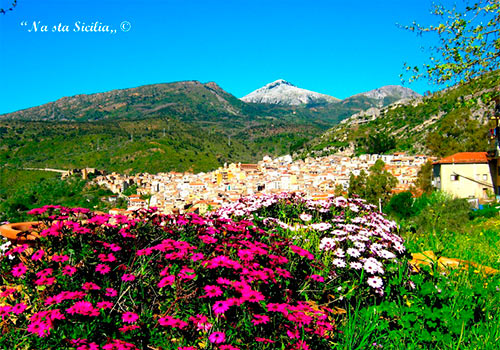
Collesano.
Photo: Claudia Nasta / Na sta Sicilia
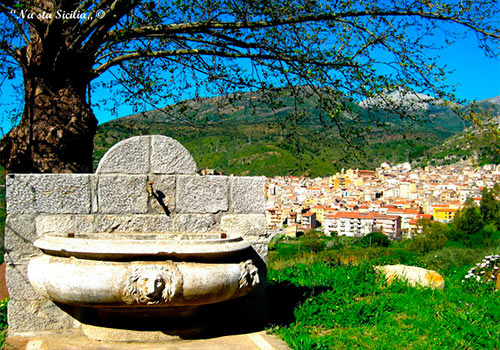
Collesano.
Photo: Claudia Nasta / Na sta Sicilia
Collesano, known in Ancient Greek as Κολασσαέων (Kolassaéon), and in Sicilian as Culisanu, is a municipality located in the Metropolitan City of Palermo, Sicily. Positioned approximately 70 kilometers away from Palermo, the town is nestled amidst the scenic Madonie Mountains, characterized by its picturesque hills and proximity to the Tyrrhenian Sea. Notably, Collesano has been a part of the prestigious Targa Florio racing circuit since its inception in 1906, and it proudly houses the official Targa Florio Museum.
The historical roots of Collesano are deeply intertwined with the ancient inhabitants of Sicily, known as the Sicani. Subsequently, the town's history is connected to that of Imera, the birthplace of the renowned poet Stesichoros, and an ancient Greek settlement founded by Chalcidians, only to be later destroyed by Hannibal during 208 B.C. (with a more likely date range being 212 - 210 B.C.). References to Collesano can be found in the works of the Arab geographer al-Idrisi, particularly in "The Book of Roger," where he narrates the Norman king Ruggero II's devastating conquest of the town Qal'at as-Sirat, situated on the summit of Golden Mountain. Following this conquest, the town was rebuilt and renamed Bagherino. Over time, the town underwent further name changes, evolving into Golisano and eventually becoming known as Collesano.
Throughout the Middle Ages, Collesano was governed by various influential aristocratic families, including the countess Adelicia de Alife, a niece of the Norman king Roger II of Sicily, as well as the count of Avenel, the Ventimiglia's, the Cicala's, the Centelle's, the de Folch Cardona, the Aragona, the Moncada's, and the Ferrandina's.
Collesano boasts several notable landmarks, attracting visitors interested in its rich history. Among these landmarks are the ruins of the Norman castle, the historic ceramic manufactory, and the Cathedral of St. Peter. Additionally, the town is home to several churches, including St. Mary "the Old," St. James, St. Sebastian and Fabian, St. Dominic or St. Mary "the New," and St. Mary of Jesus. Other significant sites include the Pedaly's Abbey and the Targa Florio Museum, which serves as a popular stop for vintage car enthusiasts participating in events on the Madonie Circuit.
Moreover, Collesano is renowned for its exquisite ceramic artwork and traditional cultural events, such as the "la Cercha" procession featuring the Penitentes, which takes place annually during Holy Week. Furthermore, the "la Casazza" event, known as the "Cycle of Collesano," has been showcased five times in the past century, adding to the town's cultural vibrancy and heritage.
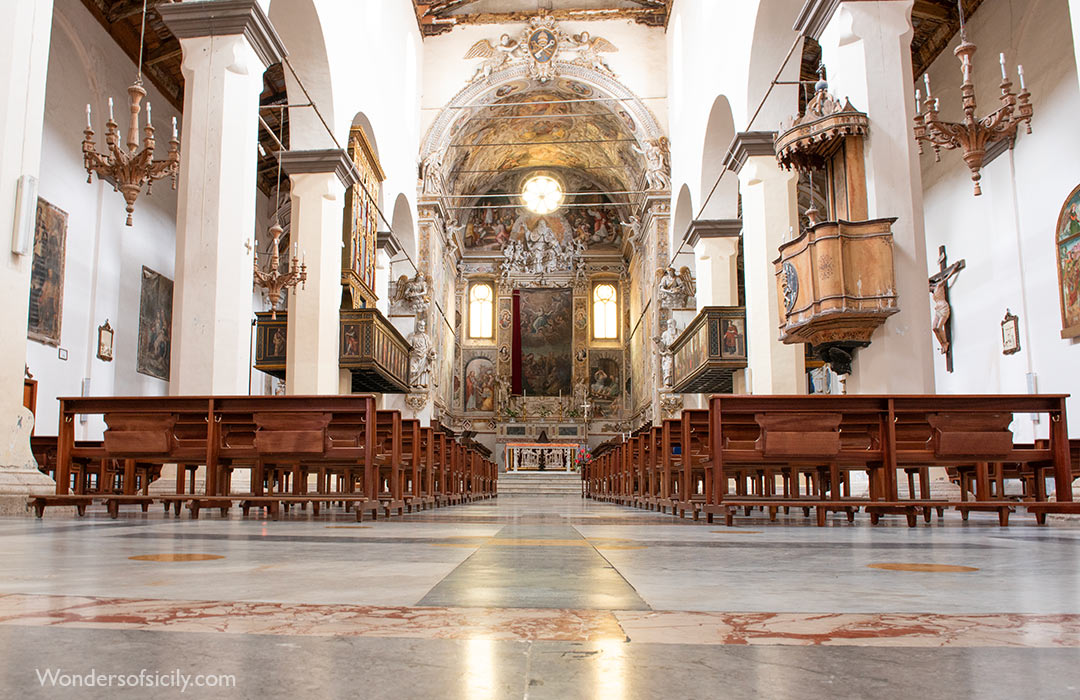
The interior of Chiesa Madre, Collesano.
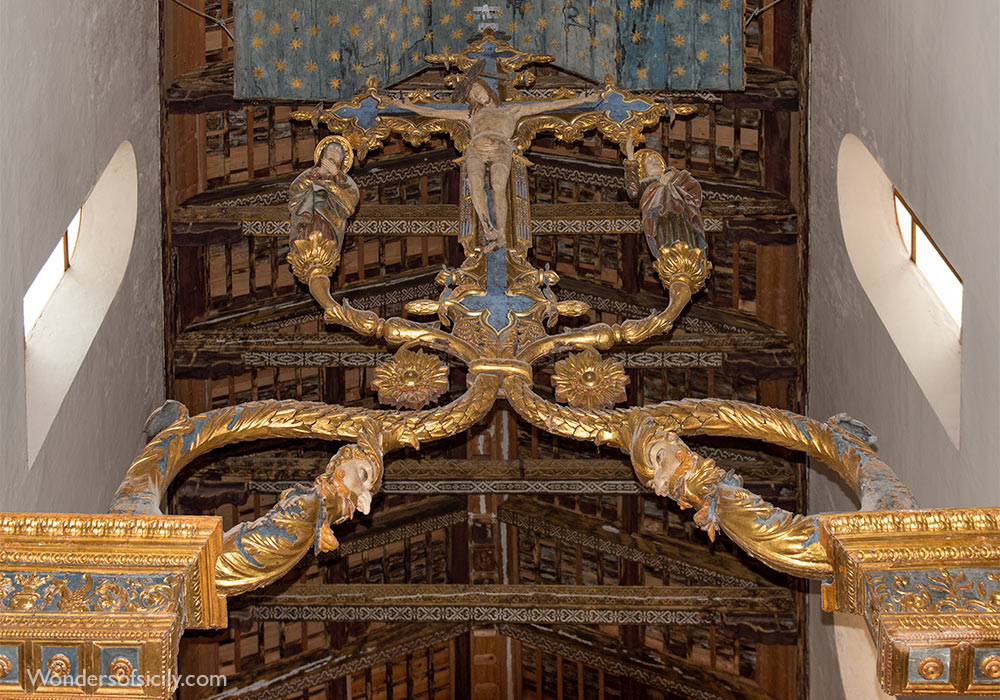
A spectacular crucifix from 1555 is hanging from the roof in the church Chiesa Madre (Basilica San Pietro).
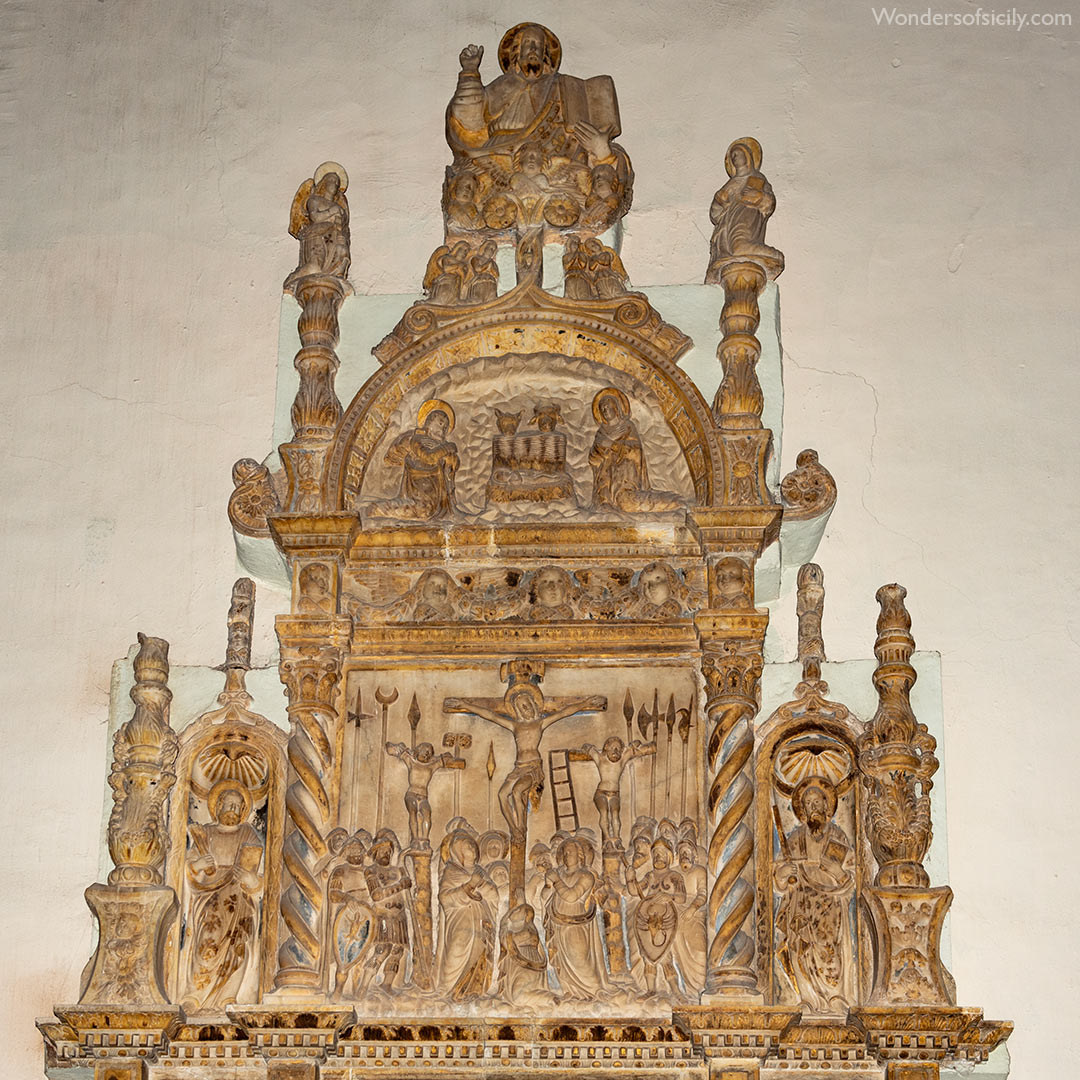
Side altar by D. Gagini aka Gaggini (1489) in the church Chiesa Madre (Basilica San Pietro).
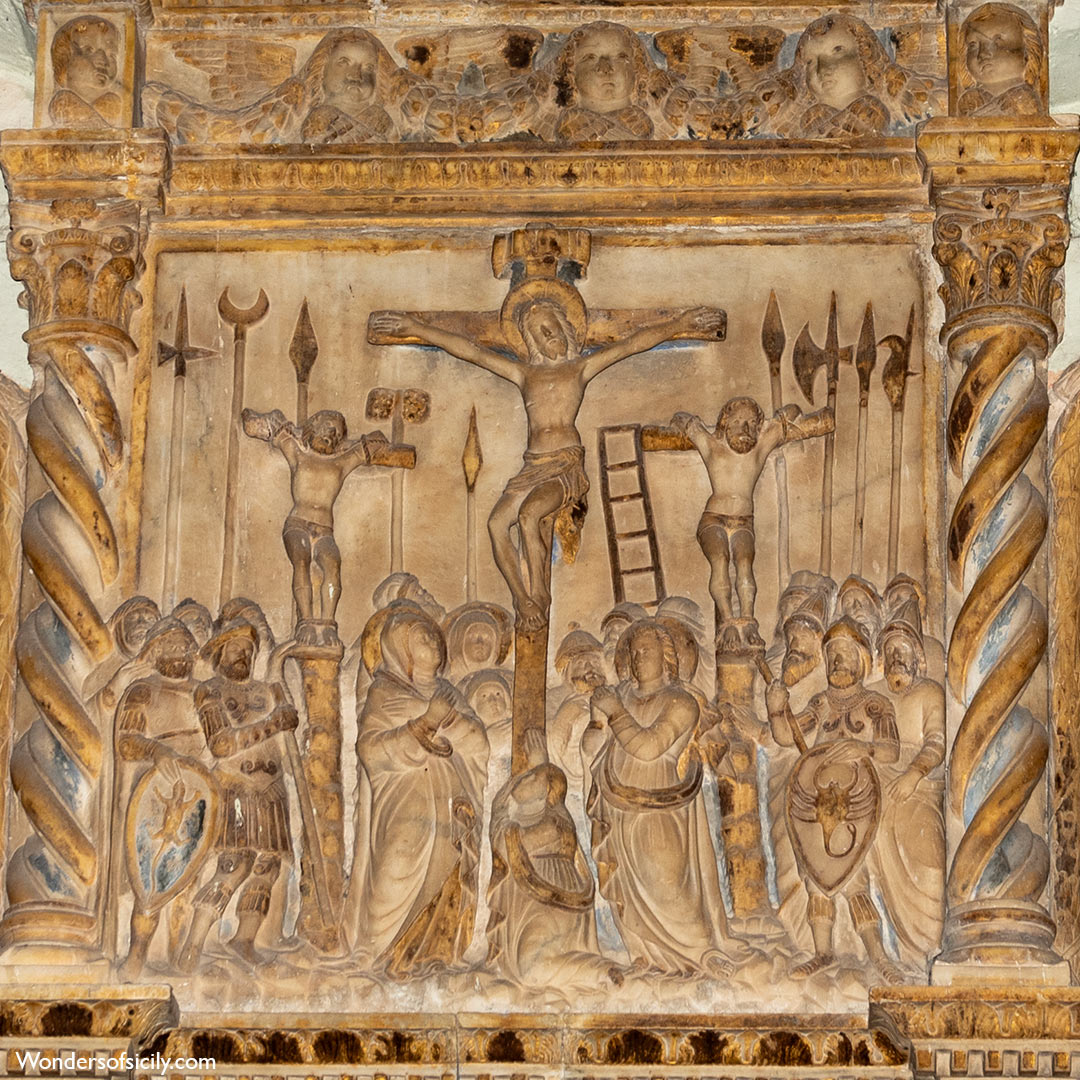
The crucifixion. Detail of a side altar in the church Chiesa Madre (Basilica San Pietro), Collesano.
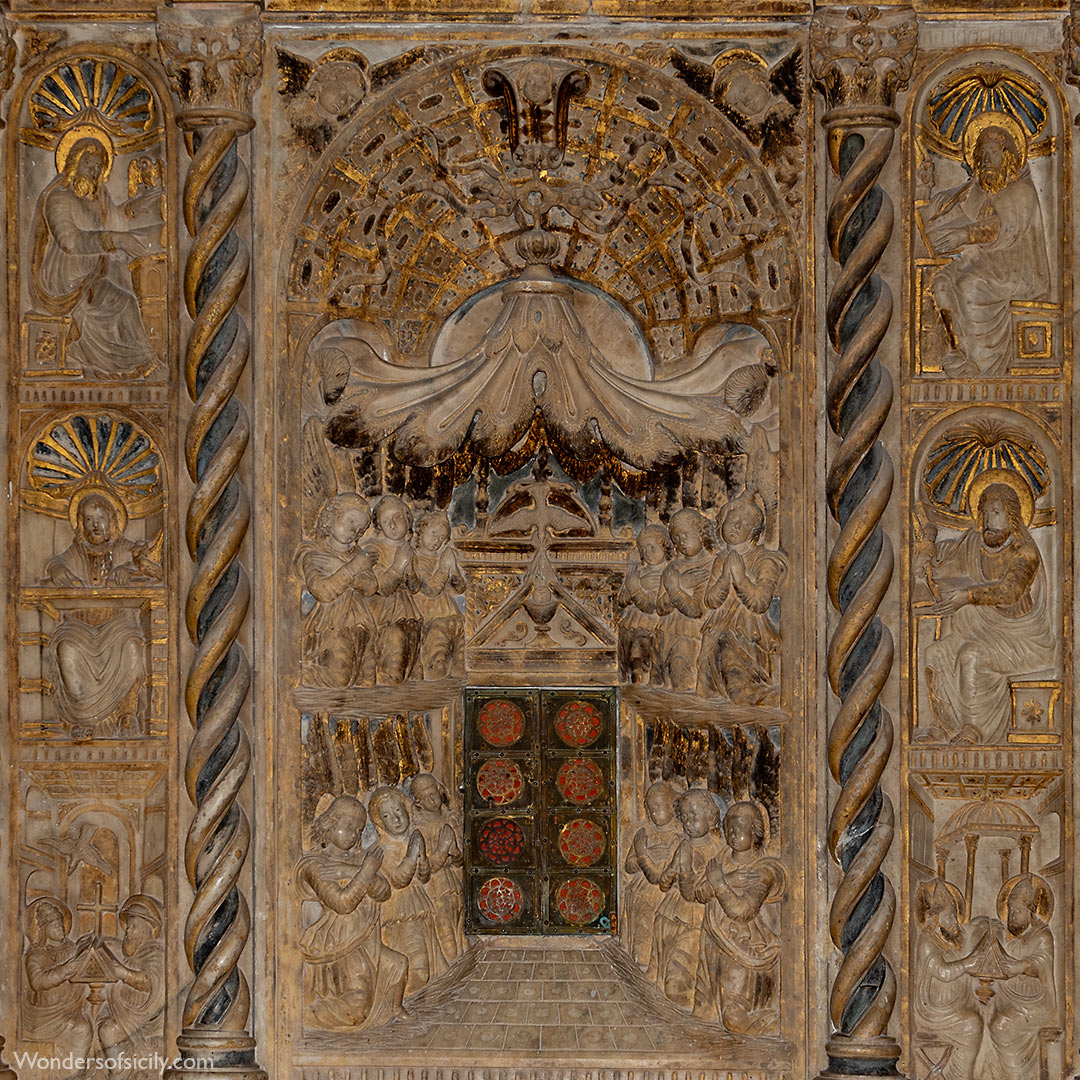
Detail of a side altar in the church Chiesa Madre (Basilica San Pietro), Collesano.
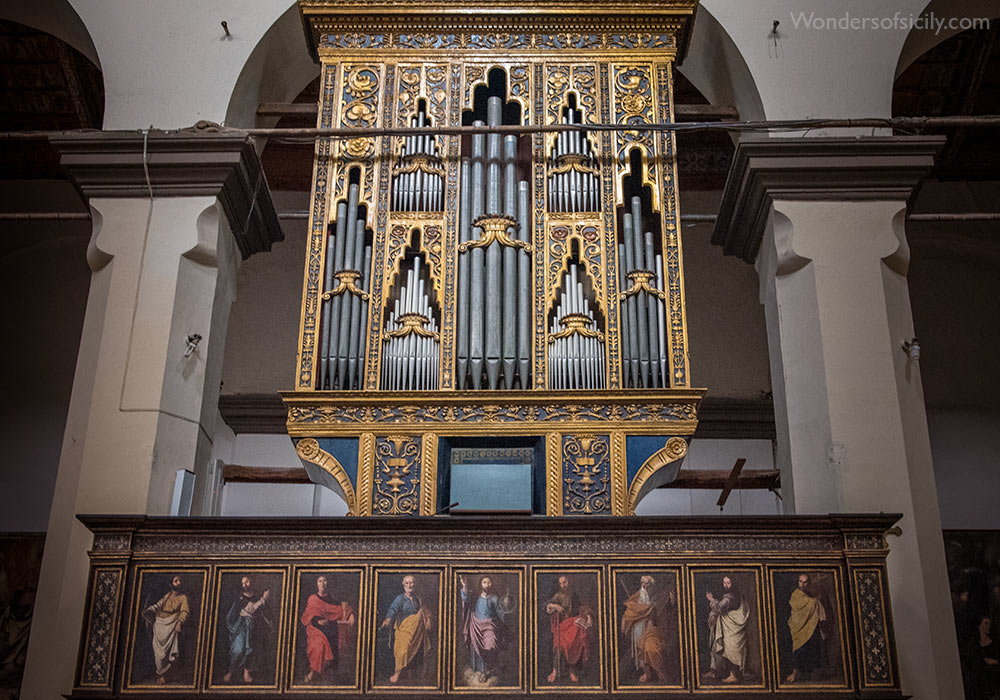
The organ by Antonino La Valle is dated 1627. Chiesa Madre (Basilica San Pietro), Collesano.
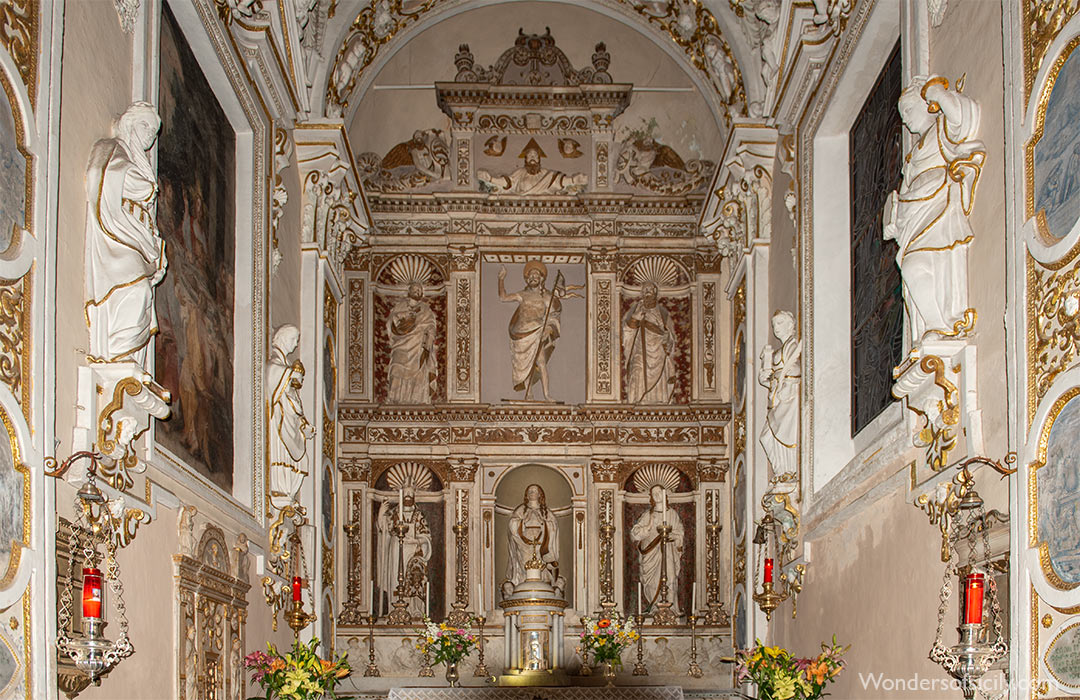
One of the altars in the church Chiesa Madre (Basilica San Pietro), Collesano.
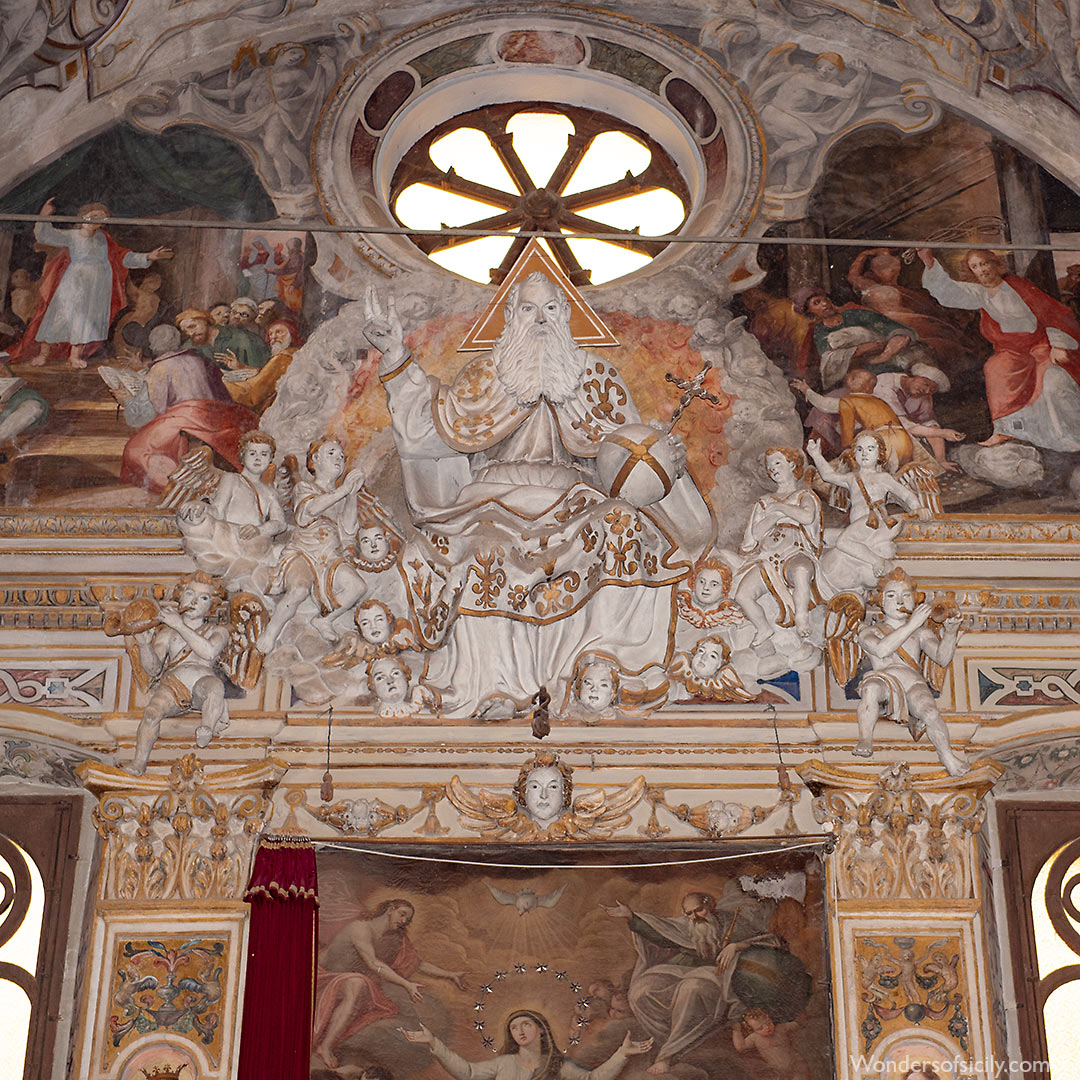
Descorations above the high altar in the church Chiesa Madre (Basilica San Pietro), Collesano.
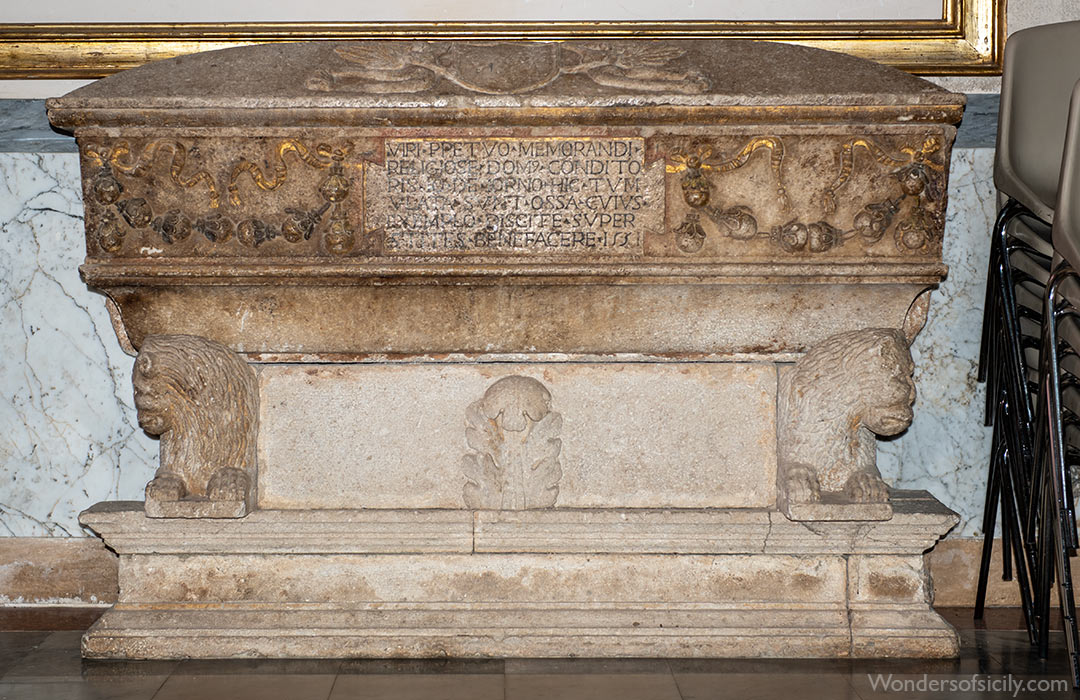
Sarcophagus (1551) in the church Chiesa Madre (Basilica San Pietro), Collesano.
Targa Florio Race and the Museum
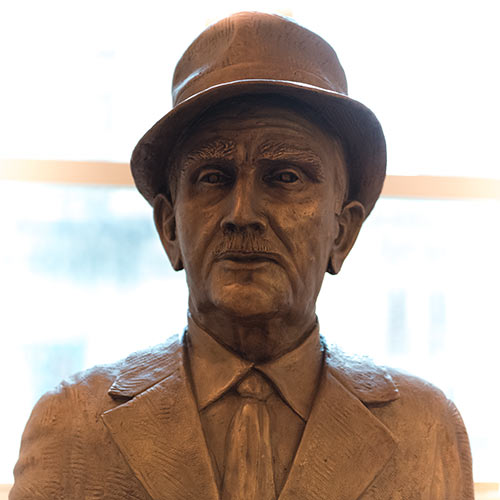
Vincenzo Florio.
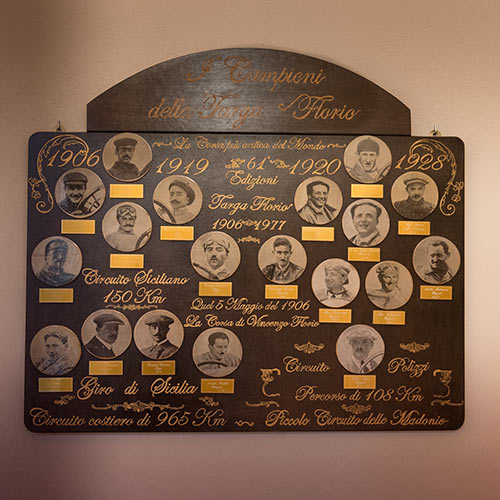
Early champions of the Targa Florio rally.
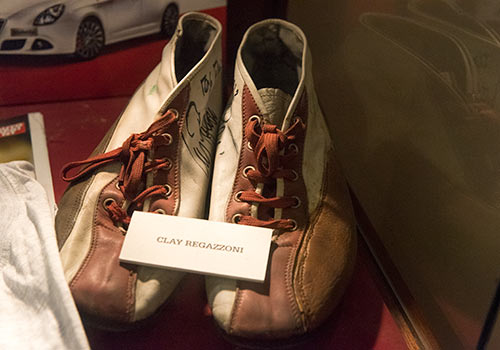
Clay Regazzoni (1939-2006).
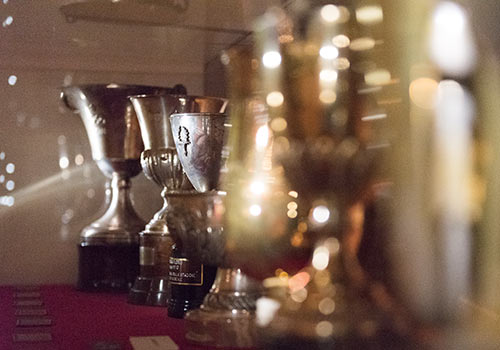
Trophies.
Targa Florio 1972 Alfa Romeo Tipo 33
- Museum Targa Florio Collesano Homepage
- Collesano | Porta naturale delle Madonie (Na sta Sicilia - Arte, Storia, Cultura e Tradizioni, blog by Claudia Nasta)
Parking in Sicily
The tips below are just suggestions. Many find it better to have a specific place to go to, but if you're comfortable with driving around and just see where you end up, please do. You may find better parking than these recommendations, or you may get trapped in a one-way labyrith. If you really want to prepare for your arrival in a Sicilian town, we found it very helpful to use Google Maps and choose Street View.
- Agrigento: There are several parking lots close to the Valley of the Temples.
- Bagheria: Very close to Villa Palagonia, you'll probably find parking. Start looking at Via Don Luigi Sturzo, 7
- Caccamo: Parking in the street when you arrive, just before the castle. Or in the Piazza Duomo.
- Castelbuono: Parking near the castle is the most obvious choice but it can be full.
- Castelmola: In Via Cuculunazzo there is a small parking garage. It is not possible to park in the village itself.
- Catania: There is a large (and cheap) parking lot in front of Hotel Mercure Catania Excelsior, Piazza Giovanni Verga 39
- Cefalù: The street along the beach (Lungomare Giuseppe Giardina) has lots of parking spaces, but you'll have to pay. There's also parking near the railway station. If you really want to park for free, and you don't mind walking for 10-15 minutes, you could try the cemetary.
- Gibilmanna: Usually no problems parking near the church.
- Linguaglossa: Park in the street near the 18th century Church Chiesa Madre.
- Modica: We found lots of parking spaces in Viale Medaglie D'Oro, but you'll (probably) have to pay at a nearby bar(!). We paid, but no one else seemed to bother …
- Monreale: Make it easy and use the parking garage in Via Palermo 102. 150 m to the cathedral. You can even stay here and take a taxi down to Palermo centre if you want to choose the easiest solution.
- Noto: If you don't mind walking 5-7 minutes, we recommend going for the free parking in Via Napoli as you approach the centre. Look for parking after you have passes the petrol station on the right. Close to the city gate, you can park (and pay) in Corso Vittorio Emanuele. Unemployed, criminal looking men may want to protect the car for you.
- Palermo: Avoid car if you can. It is easier to park during the riposo (siesta). See under Monreale.
- Ragusa superiore: Parking opposite the Best Western Hotel Mediterraneo Palace (aka Mediterraneo Palace) in Via Roma 185 (Montalbano location!). Parking marked with blue lines, meaning you have to pay. Also: At Piazza Matteotti (by the Post office from the Mussolini period), there is an underground parking house. Entrance via Corso Italia, next to number 53.
Ragusa Ibla: There are parking lots in Via Avvocato Giovanni Ottaviano, near the Q8 petrol station. Here is a link to the place in Google Street View. - Segesta: Big parking lot near the entrance.
- Selinunte: Big parking lot near the entrance of the archeological site.
- Termini Imerese: Parking near the cathedral.
If you see any errors or have any tips, please inform us via email.

